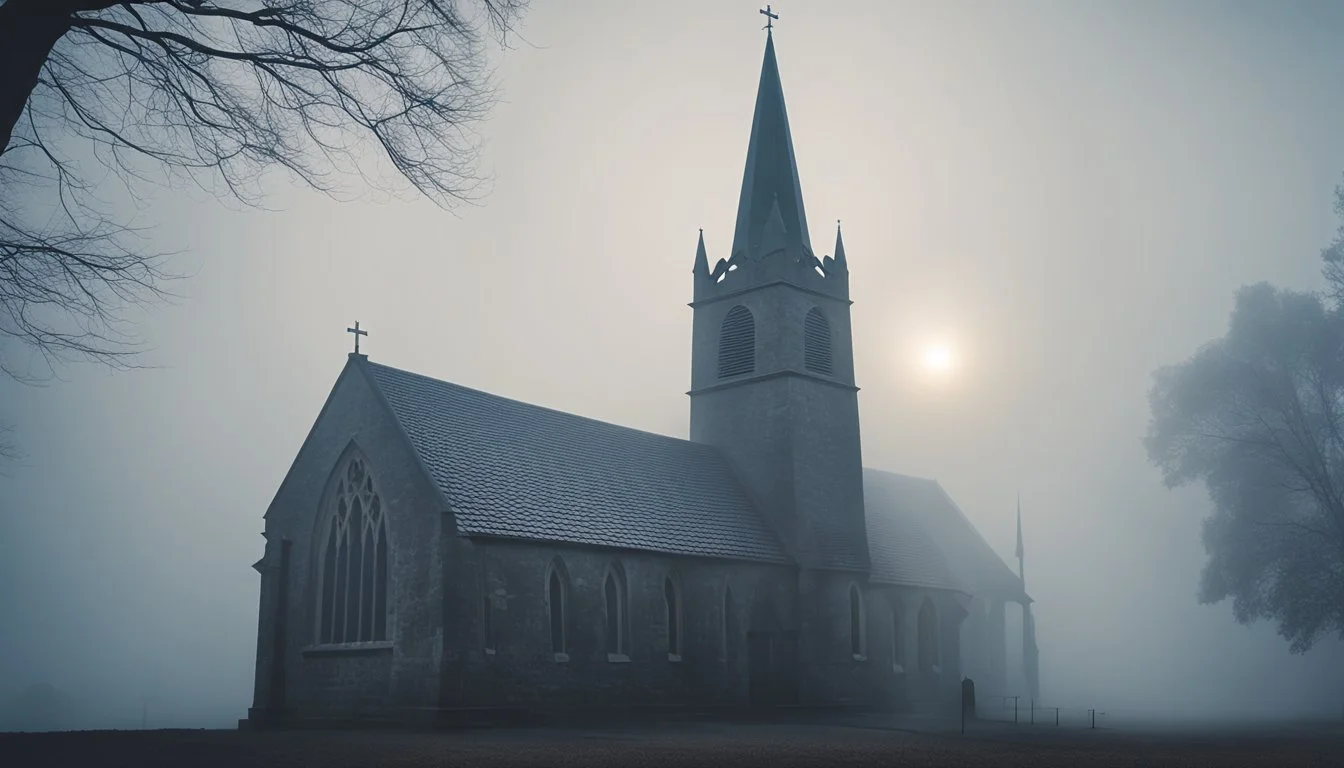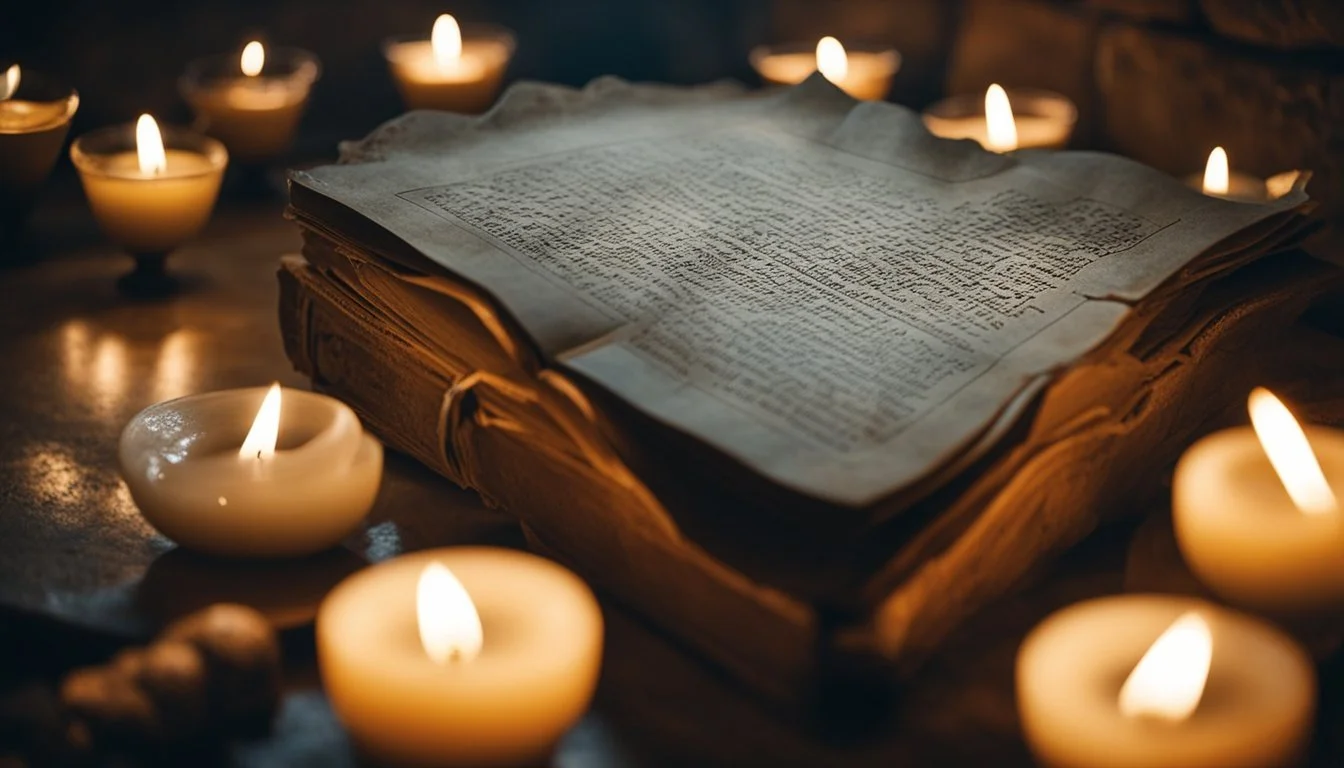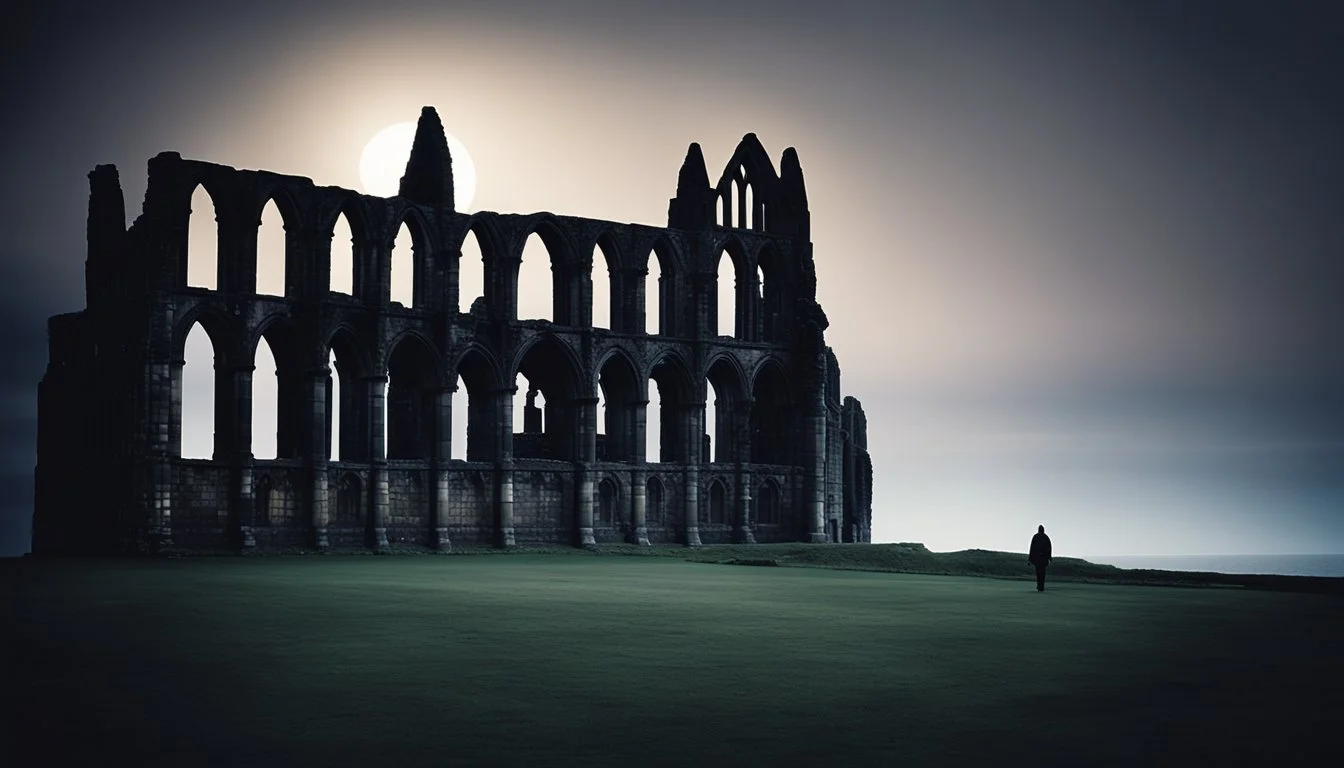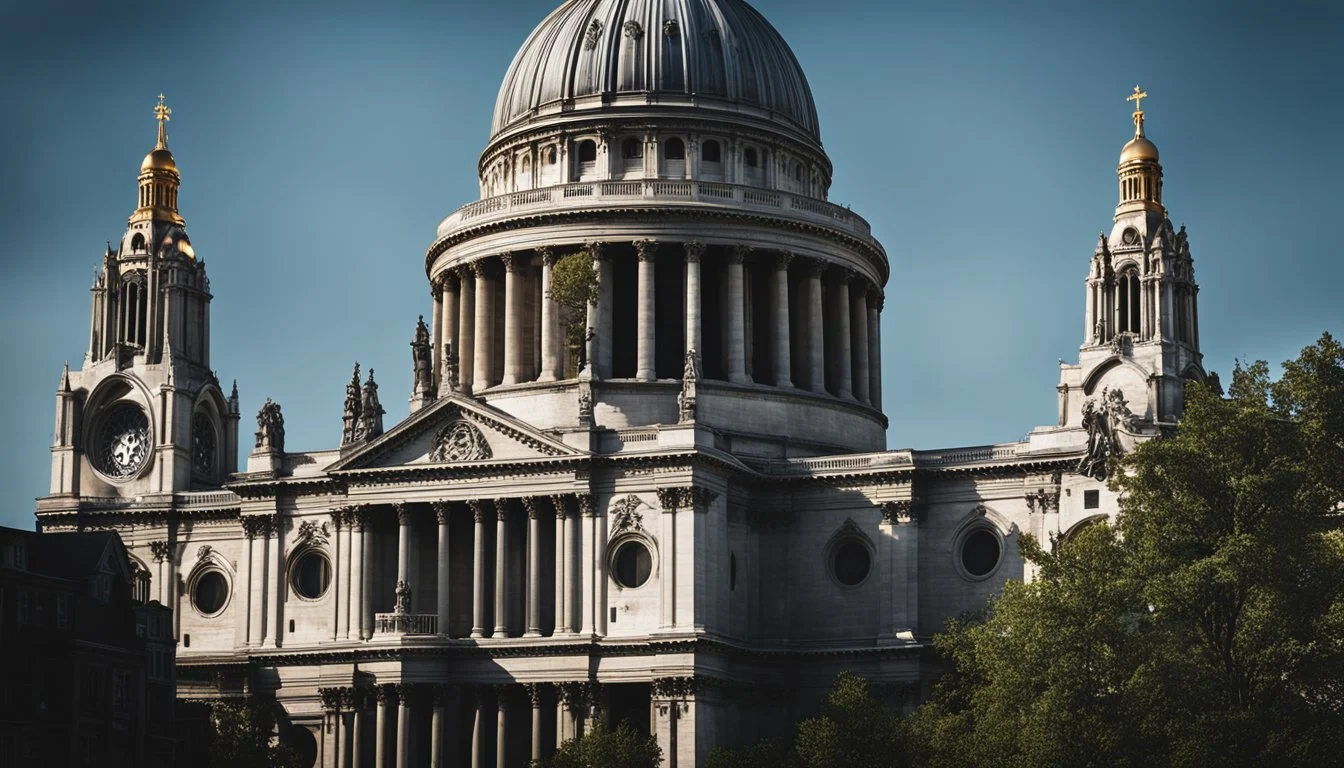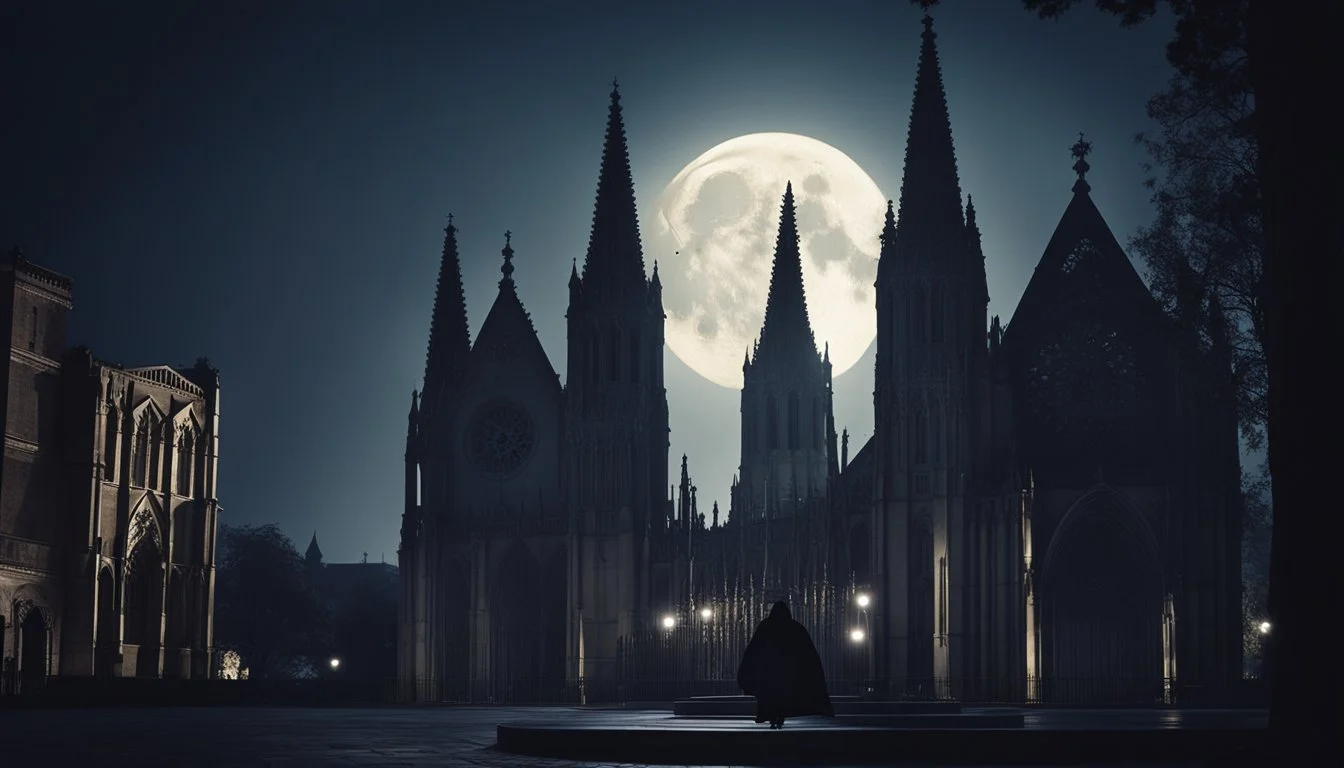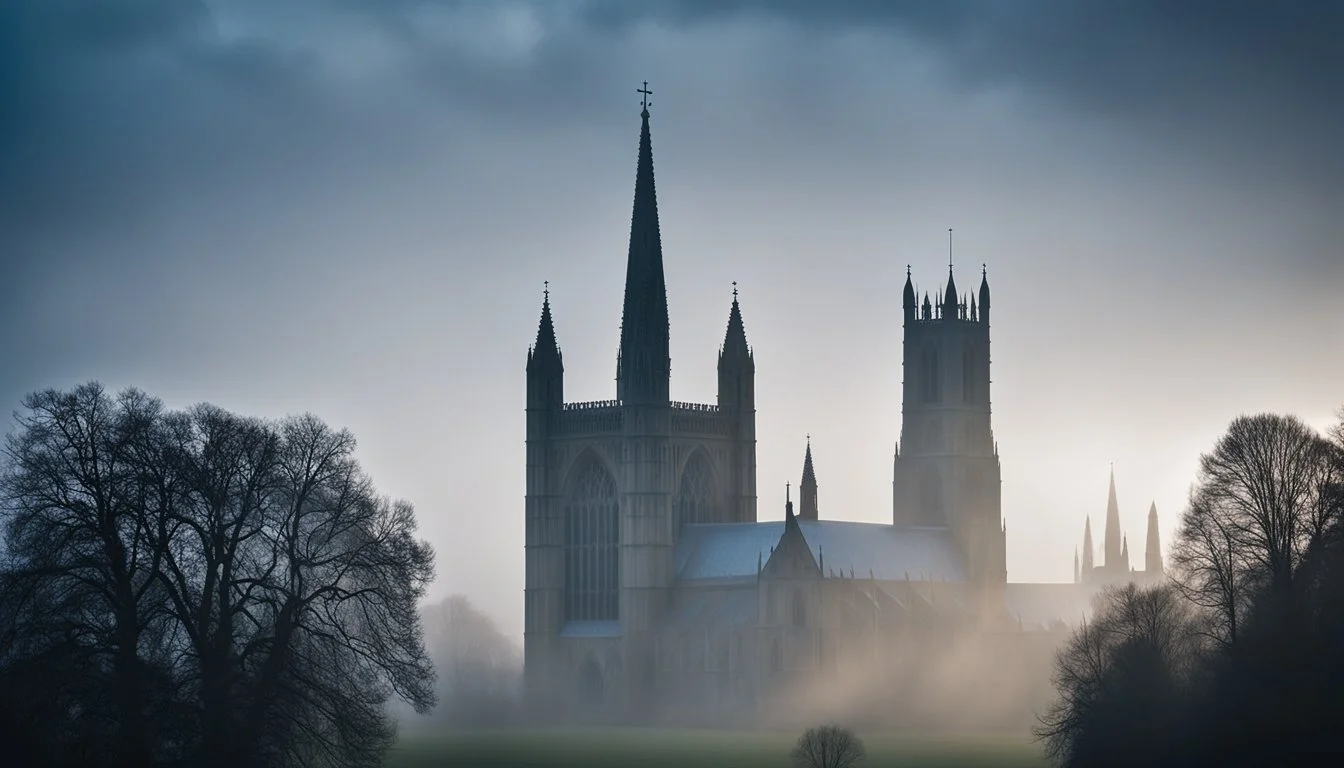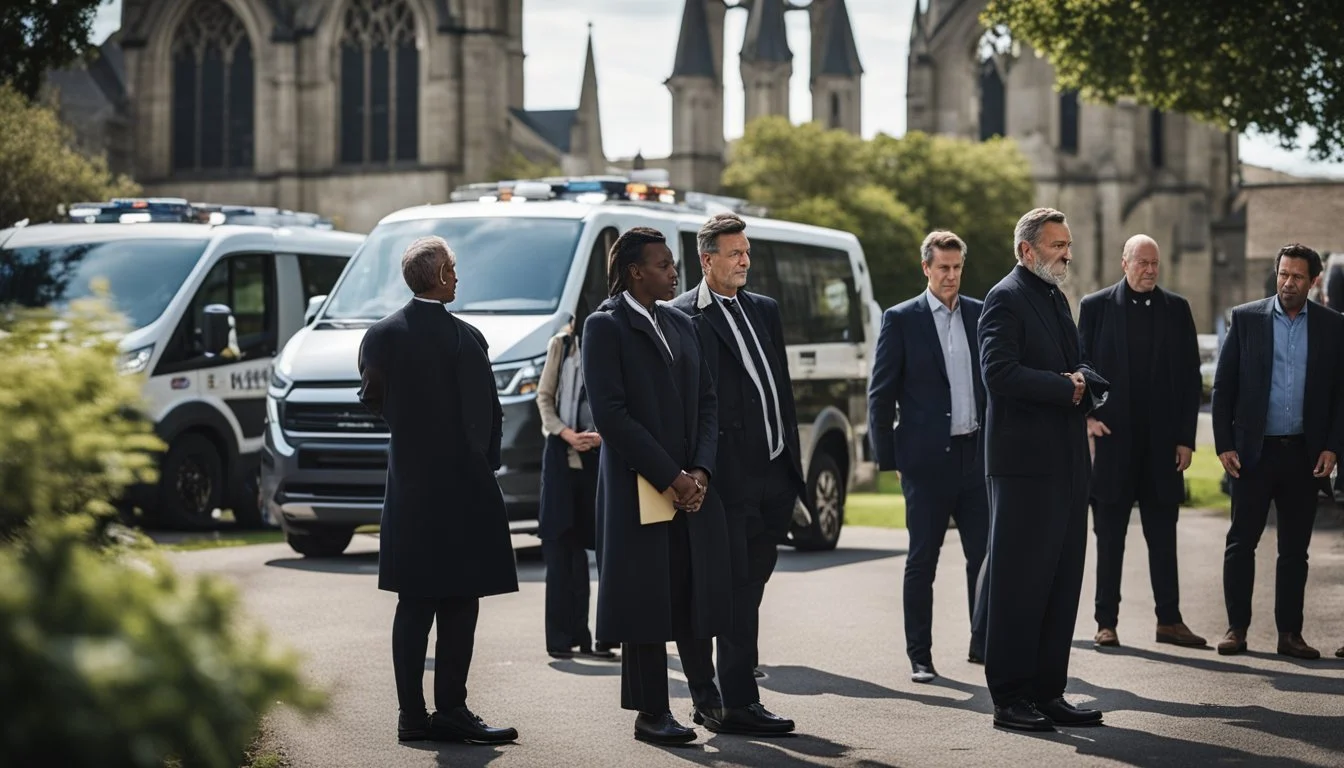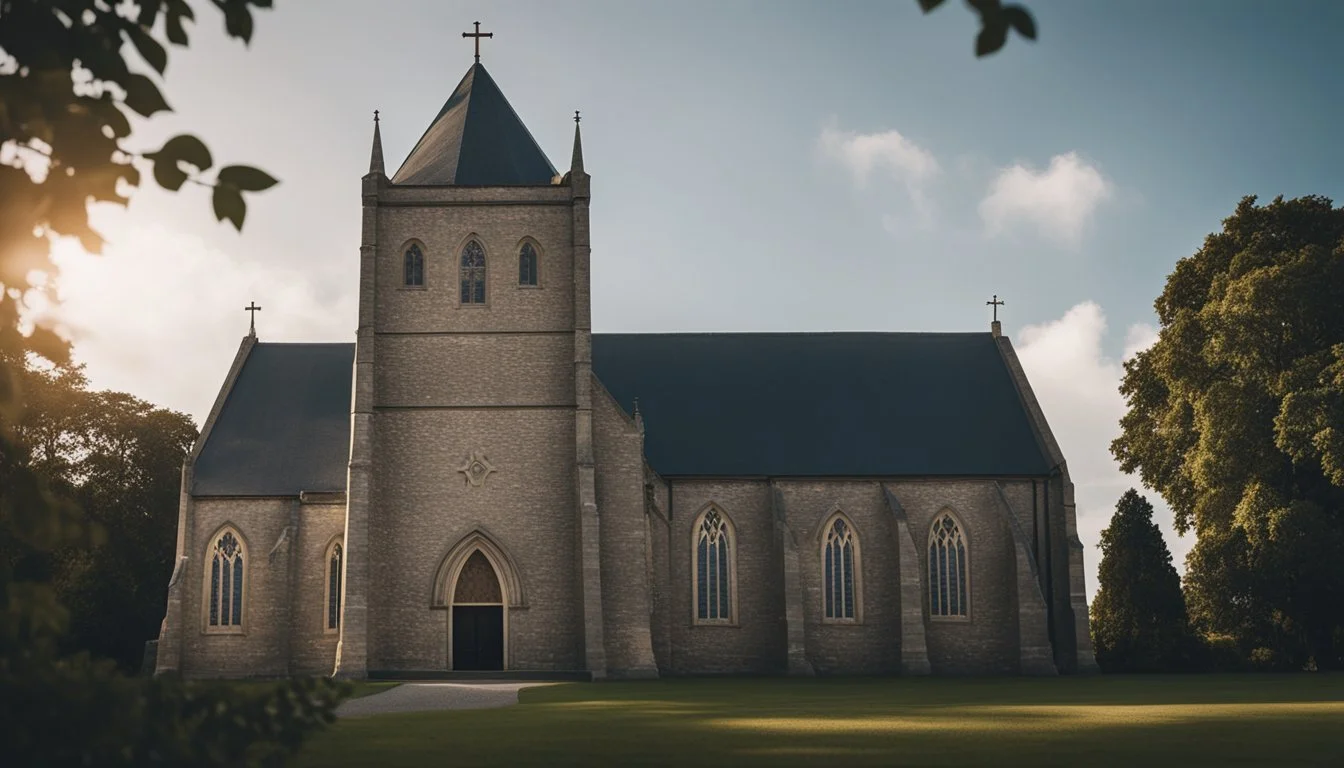10 True Crime Documentaries About Anglican Churches Uncovering Dark Secrets
True crime documentaries have gained significant popularity for their compelling storytelling and in-depth exploration of real-life events. Among these, a niche yet intriguing subgenre focuses on mysteries and scandals within Anglican churches. This article introduces ten true crime documentaries that bring to light the darker side of these religious institutions and the individuals involved.
For those interested in the intersection of faith and criminal investigations, this list offers a captivating exploration of cases within Anglican communities. From stories about corruption and cover-ups to more personal tales of betrayal and suffering, these documentaries delve into incidents that challenge the moral and ethical standards traditionally associated with religious organizations. With each film, viewers are invited to critically examine the complex relationship between faith and justice.
1) Murder in the Cathedral (1935)
"Murder in the Cathedral" is a verse drama by T. S. Eliot that was first performed in 1935. It portrays the assassination of Archbishop Thomas Becket in Canterbury Cathedral in 1170.
The play delves into the complex relationship between Becket and King Henry II. The tension culminates in a dramatic portrayal of Becket's martyrdom.
Eliot drew heavily on historical records, particularly the writings of Edward Grim, an eyewitness to the assassination. The story scrutinizes themes of power, betrayal, and faith.
This documentary-style drama uses powerful prose to present a historical event with significant literary flair. It provides a gripping look into the conflict between church and state.
More information can be found here.
2) The Secret of the Canterbury Cathedral
"The Secret of the Canterbury Cathedral" dives into the heart of Britain's oldest cathedral. This documentary, originally aired on BBC2, provides an exclusive look into the day-to-day functioning and historical significance of Canterbury Cathedral. It’s a rare opportunity for viewers to glimpse behind the scenes of this iconic religious site.
Filmed over the course of a year, the documentary captures various aspects of cathedral life, including the roles of its clergy, staff, and volunteers. It sheds light on the challenges and triumphs faced by those who maintain this historically rich structure.
One of the key highlights is the exploration of the cathedral's architectural marvels. The show meticulously examines the Gothic features and the detailed stonework that have made the cathedral a centerpiece of religious and architectural study for centuries.
The documentary also delves into lesser-known stories behind some of its most famous relics and artifacts, providing context and history that are often missed by casual visitors.
For those intrigued by the intersection of history, architecture, and religion, this documentary serves as an informative piece that captures the essence of the Canterbury Cathedral, while uncovering some of its hidden mysteries.
Find more about Canterbury Cathedral (2014) on BBC2.
3) Saintly Sins: The Durham Cathedral Murders
"Saintly Sins: The Durham Cathedral Murders" (2023) is a gripping documentary that examines the shocking crimes committed within the serene and sacred walls of Durham Cathedral.
In the early 1990s, a series of gruesome murders haunted the cathedral community. The peaceful ambiance of the historic site was shattered when the bodies of several clergy members were discovered.
The documentary delves into the investigation led by local detectives. Suspicion fell upon a prominent church official, whose actions raised many questions.
The film explores the intricate relationship between the church, law enforcement, and the community. It illustrates the challenges in solving crimes within such a revered institution.
Using interviews and archival footage, it provides an in-depth look at the impact of these events on the clergy and congregation. The storytelling is methodical, emphasizing factual accuracy and the painstaking work of the investigators.
The revelations about the suspect's motives and the trial proceedings are particularly fascinating. They highlight the complexities and the emotional toll of pursuing justice in this unique setting.
For more information, visit IMDb or Wikipedia for "Saintly Sins: The Durham Cathedral Murders" (2023).
4) The Priest's Secret: A Westminster Abbey Mystery
The Priest's Secret: A Westminster Abbey Mystery (2022) focuses on the discovery of hidden documents within the ancient walls of Westminster Abbey. These documents linked several clerics to a series of unsolved murders dating back to the 1800s.
The film provides a meticulous account of how modern forensic techniques were used to uncover these secrets. Experts analyzed the hidden records and traced the genealogy of the implicated clerics, revealing a dark pattern of deceit and betrayal.
Archival footage and interviews with historians add depth, providing context to the grave implications of this discovery. The filmmakers carefully balance sensational content with factual accuracy, ensuring that the film is both compelling and informative.
5) Blood Under The Cross: York Minster's Dark History
York Minster, one of the largest Gothic cathedrals in Northern Europe, carries a chilling past. The documentary, "Blood Under The Cross: York Minster's Dark History" (2024), uncovers sinister events that transpired within its sacred walls. It delves into tales of murder, betrayal, and dark rituals dating back to medieval times.
The film explores the notorious case of the Archbishop of York, William Fitzherbert, whose untimely death was shrouded in mystery. Rumors of poisoning and political intrigue sent shockwaves through the ecclesiastical community.
Focusing on the Victorian era, the documentary reveals a series of unexplained deaths among the clergy. Many believe these deaths were linked to an ancient curse said to protect hidden treasures within the Minster.
Interviews with historians and clergy provide insight into these historical narratives. Detailed archival footage and expert commentary enrich the storytelling, unravelling centuries of grim history. External Link
6) The Haunted Vicarage: Stories from St. Alban's Church
St. Alban's Church, known for its historic architecture, has another claim to fame: the haunting tales from its vicarage. These stories have captured the interest of paranormal enthusiasts and documentary filmmakers alike.
Many believe that the vicarage is haunted by restless spirits. Shadows reportedly move on their own, and unexplained noises often disrupt the silence, leaving visitors unsettled.
One significant account involves the apparition of a former vicar seen wandering the halls. Witnesses describe the figure as wearing traditional clergy attire, adding a chilling authenticity to the sightings.
Film crews have documented these eerie experiences. One film, "The Haunted Vicarage: Ghosts of St. Alban's Church" (2017), delves into these mysterious occurrences, interviewing locals and paranormal investigators.
These haunting stories are not just confined to the church's past. Modern-day visitors and clergy sometimes report feeling watched or experiencing cold spots, heightening the church's mystique further. More information on IMDB.
This mix of history and the supernatural makes St. Alban's vicarage a unique subject for true crime and paranormal documentaries, blending ecclesiastical heritage with chilling ghost stories.
7) Confessions of Whitby Abbey
Whitby Abbey's history stretches back to the 7th century, making it a rich source of intrigue and mystery.
The abbey, situated above Whitby in North Yorkshire, played a significant role in the medieval Northumbrian kingdom. Its possessions were confiscated during the Dissolution of the Monasteries under Henry VIII.
A true-crime documentary titled "Confessions of Whitby Abbey" (2023) delves into the abbey's dark past.
The documentary explores various unsolved crimes and mysterious events that have taken place within and around the abbey, revealing the turbulent history that has shaped its legacy.
Viewers are taken on a journey through tales of treachery, unexplained disappearances, and other enigmatic occurrences that have left a mark on this ancient site.
For more information on Whitby Abbey, visit Wikipedia.
8) The Suspicious Deaths at St. Paul's Cathedral
St. Paul's Cathedral, a historical Anglican church in London, has been the backdrop for various mysterious incidents. Among these are the suspicious deaths weaving their way into true crime narratives.
The documentary "Death at St Paul's Cathedral" (2024) examines these events. The story follows Diana Bakewell and Zaf Williams who find themselves entangled in a web of intrigue while visiting this iconic cathedral.
Zaf is tasked with obtaining his tour guide qualification and must become intimately familiar with St. Paul's. During this process, both he and Diana uncover shocking truths about seemingly accidental deaths that may have darker explanations.
The cathedral's history and architectural wonders provide a stark contrast to the grisly discoveries. This juxtaposition amplifies the eerie atmosphere that pervades the documentary, pulling viewers into the shadows of one of London's most recognizable landmarks.
Such documentaries delve into the hidden secrets behind these deaths, offering insights and exposing possible motives and suspects. True crime enthusiasts are drawn to the blend of historical reverence and modern-day mystery surrounding the cathedral.
More on this documentary can be found on its Wikipedia page.
9) Secrets and Shadows: The St. Mary's Cathedral Enigma
St. Mary's Cathedral in San Francisco is known for its unique architectural design and unusual "Two O'Clock" phenomenon. At a specific time each afternoon, a shadow resembling a breast appears on its concrete roof, an occurrence that has sparked curiosity and debate.
This intriguing feature of St. Mary's has led to speculations about hidden meanings or intentional design choices. Some believe the architects, when designing the sweeping curves of the cathedral, might have anticipated this shadow pattern.
Beyond the architectural curiosity, St. Mary's Cathedral stands as a significant religious and cultural landmark. Its enigma adds a layer of mystery, drawing not just the faithful but also those fascinated by its unique shadow and the questions it raises.
One true-crime documentary dives into the connection between St. Mary's and various unsolved mysteries in its vicinity, blending architectural intrigue with investigative storytelling. This film sheds light on the cathedral's lesser-known stories, painting a broader picture of its place in the community.
Learn more about "Secrets and Shadows: The St. Mary's Cathedral Enigma" (2021) here.
10) Ghosts of the Ely Cathedral (2022)
Ely Cathedral, a stunning Anglican church in Cambridgeshire, England, is known for its architectural beauty and historical significance. Ghosts of the Ely Cathedral examines the eerie tales linked to this ancient site.
The cathedral has stood since the 11th century, and over the years, various ghost stories have emerged. Some visitors and staff have reported sightings of spectral monks wandering the halls.
The documentary digs into historical records, exploring the cathedral's rich history while addressing claims of paranormal activity. It features interviews with historians, paranormal investigators, and individuals who have experienced strange occurrences.
Visually, the film captures the cathedral's Gothic architecture, providing a haunting backdrop to the ghostly tales. The blend of history and supernatural folklore offers an intriguing look at one of England's most storied religious sites.
For more information on Ghosts of the Ely Cathedral, visit IMDB.
Historical Context of Anglican Churches
The Anglican Church, deeply woven into the fabric of Christian history, has a rich context beginning with its establishment and growth, its renowned figures, and its cultural impact.
Founding and Growth
The roots of the Anglican Church trace back to the early 16th century during the English Reformation. This movement saw King Henry VIII sever ties with the Roman Catholic Church to form the Church of England.
The initial schism was driven largely by political and personal motivations, notably Henry's desire for an annulment that the Pope refused to grant. Subsequently, the Church of England began to shape its own identity, distinct from Catholicism yet retaining many traditional liturgical practices.
Over time, Anglicanism spread beyond England to other parts of the world, particularly through British colonization. This led to the establishment of the Anglican Communion, a global fellowship of churches maintaining ties to the Church of England while operating independently.
Prominent Figures
Key figures have played pivotal roles in shaping Anglicanism. Thomas Cranmer, the first Protestant Archbishop of Canterbury, was instrumental in the development of the Book of Common Prayer, a foundational text for Anglican worship.
Another notable figure is Richard Hooker, whose works laid the theological and philosophical foundations of Anglican theology. His advocacy for reason, scripture, and tradition as sources of authority has had a lasting influence.
In more recent times, leaders like Rowan Williams, a former Archbishop of Canterbury, have played significant roles in addressing contemporary issues within the church and promoting unity within the Anglican Communion.
Cultural Significance
The cultural impact of Anglicanism is significant, particularly in the realms of education, social justice, and arts. Anglican churches have been centers of community life, often providing education and healthcare services.
The tradition of choral music is robust within Anglicanism, with many cathedrals and chapels being renowned for their choirs and musical contributions. This cultural heritage is celebrated worldwide, influencing various forms of Christian worship.
Anglicanism also intersects with various political and social movements, advocating for issues like abolition of slavery and civil rights. The church's involvement in these areas underscores its influential role in shaping broader societal values and norms.
Impact of True Crime on Religious Communities
True crime documentaries shed light on various effects within religious communities, including psychological impacts on congregations, proactive and reactive responses from church leaders, and long-term implications for the community's trust and stability.
Psychological Effect on Congregations
True crime documentaries can cause significant psychological stress among religious congregations. Anxiety and fear may arise when congregants see their place of worship involved in criminal activities.
Members might find it difficult to reconcile their faith with the revelations presented in these documentaries. This cognitive dissonance can lead to spiritual crises, diminishing trust in their religious leaders and the institution itself.
Younger members might be particularly affected, experiencing heightened emotional distress and disillusionment when discovering the dark sides of their religious community. Regular pastoral counseling and mental health support are essential to mitigate these effects.
Church Responses to Crime
When crimes within the church become public, religious leaders often take rapid steps to manage the situation. Transparent communication with the congregation is key to maintaining trust.
Churches might implement internal investigations and cooperate fully with law enforcement to ensure accountability. Additionally, public apologies and compensatory actions are often undertaken to address the wrongs committed.
To restore faith within the community, churches may adopt new protocols, such as stricter background checks for leadership positions and establishing confidential reporting channels for misconduct. These measures aim to reassure congregations of the church's commitment to integrity and safety.
Long-term Implications
The long-term implications of true crime exposure can be profound for religious communities. Trust in the church may erode, leading to lower attendance and reduced community engagement. This distrust can extend beyond the local congregation, affecting the denomination's reputation globally.
Moreover, the church might face financial difficulties due to reduced donations and potential legal expenses. Rebuilding a tarnished reputation takes considerable time and sustained effort.
Churches often embark on rebranding initiatives and community outreach programs to regain public trust. Fostering a culture of openness and accountability becomes paramount for the long-term stability and growth of the religious community.
Ethical Considerations in True Crime Documentaries
True crime documentaries, while popular, raise significant ethical questions. These include the balance between sensationalism and truth, as well as maintaining respect for victims and their families.
Sensationalism vs. Truth
Documentaries are often guilty of sensationalism to boost viewership. They may exaggerate certain aspects of the crime, adding dramatic elements that stray from factual accuracy. This can mislead audiences, who may take these dramatic portrayals as the truth.
True crime creators must navigate the fine line between engagement and misinformation. They hold a responsibility to stick to verified facts and avoid overdramatizing events. Doing so respects the audience's right to accurate information and upholds journalistic integrity.
Respect for Victims
Respecting victims is crucial in true crime storytelling. Documentaries can inadvertently retraumatize victims and their families by rehashing painful details. It's essential to handle sensitive material with care and empathy.
Victims’ consent and perspective should be integral to the narrative. This approach ensures that their stories are told with dignity and avoids exploitation. Ethical filmmakers often collaborate closely with victims or their families to present a balanced and respectful portrayal of events.

